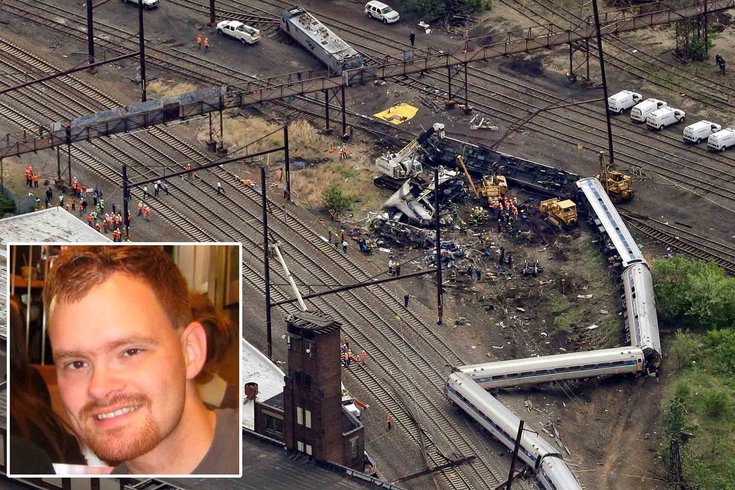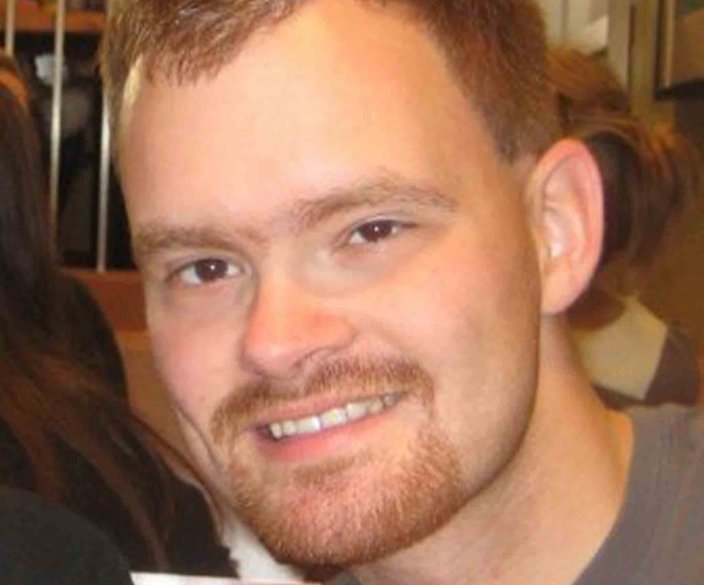
May 15, 2015
 Source/Brandon Bostian/LinkedIn
Source/Brandon Bostian/LinkedIn
Brandon Bostian, inset, who was operating the Amtrak train that derailed in Philadelphia on Tuesday night, has been an Amtrak engineer for four-and-a-half years, according to his LinkedIn profile.
Investigators on Friday sought to explain why an Amtrak train that crashed in Philadelphia had accelerated in the minute before it derailed, raising questions about whether the engineer's actions or mechanical failure, or both, caused the fatal accident.
A much-anticipated interview with the engineer, Brandon Bostian, could provide a major piece of the puzzle, federal investigators say.
The National Transportation Safety Board (NTSB) has said the train sped up from about 70 miles per hour (113 kph) to 100-plus mph in the last 65 seconds before the crash, based on a video taken by the locomotive's front-facing camera. The NTSB is investigating what caused the acceleration.
Earlier, investigators disclosed that Bostian, 32, had slammed on the emergency braking system seconds before the wreck, as the train entered a curve. That slowed the train to 102 mph, or twice the speed limit on that stretch, before it derailed, killing eight passengers and injuring more than 200 others.
Experts said the train's speed in the moments before the crash raised a number of questions: Could a technical glitch have caused the locomotive to speed up so rapidly? Would it take a deliberate action by the engineer? Or could human error, a medical issue, or some other factor like clumsiness explain the sudden burst of speed?
The agency hopes to interview the engineer in the "next few days," said Robert Sumwalt, an NTSB member, after Bostian recuperates sufficiently from a concussion suffered in the Tuesday evening crash.
Charles Culver, a certified conductor and engineer based in Texas who is not connected to the investigation, said the throttle of the locomotive that Bostian was operating has eight settings, with each click forward accelerating the train. The eighth setting is the highest.
Culver, who runs a rail consulting firm, said it does not take much force to move the throttle forward and it was possible the engineer could have fallen and moved the throttle. Passenger trains, unlike freight trains, can increase speed rapidly, he said.
“In order to increase the speed as much as it was increased in this case, you would have had to really, really move the throttle,” Culver said. “Frankly, I am puzzled about the whole thing. It’s not like it was a few miles per hour over the speed limit.”
Culver said it was possible the engineer lost awareness of the train's location due to some medical condition, such as a stroke.
All engineers are required to know speed restrictions on their routes.
“He could have had his hand on the lever and perhaps he twitched,” said Howard Spier, a lawyer and former president of the Academy of Rail Labor Attorneys. “Right now, that's the $64,000 question.”
During an interview with CNN, Xavier Bishop, a friend and former colleague of Bostian's, said he could not make sense of the sudden acceleration given Bostian's general expertise and knowledge of rail protocol.
"He was very thorough when it came to work [and] he was on point," Bishop told CNN. "He knew what he needed to know and if he wasn't sure about it...he was going to call and make sure that he got the proper information."
Bishop, who lost his job with Amtrak due to absenteeism, added, "I really believe something happened prior to him getting to that curve. We all know what the speed limits are; it's not a mystery to us."
The engineer's attorney, Robert Goggin, has said Bostian was unable to recall much about the derailment, but his memory could improve as the effects of the concussion subside.
Goggin has also said Bostian had turned off his cell phone, as Amtrak requires of all engineers behind the controls.
In a briefing to reporters on Thursday, the NTSB's Sumwalt said federal law requires transportation personnel involved in an accident to be tested for drugs or alcohol but that it takes time for the results to come back.
Workers labor Friday on the Port Richmond site where a deadly train derailment occurred earlier in the week. Amtrak is working to restore Northeast Corridor rail service between Philadelphia and New York City. (Julio Cortez / AP)
A track inspection the day before the crash turned up nothing unusual, and tests of the train's brakes before it left Union Station in Washington on Tuesday also found no problems, Sumwalt said.
Contrary to speculation that the driver might have been running late, Sumwalt also said the train departed its previous stop 10 minutes earlier on time.
In service for just over a year, the locomotive was an Amtrak City Sprinter 64, or ACS-64, powered by overhead electric lines, the NTSB said.
That type of locomotive has “excellent acceleration capabilities" to sustain speeds of 125 mph while pulling up to 18 coaches, according to an Amtrak document seen by Reuters.
The document says an on-board computer system can notify the engineer of any maintenance issues and can take self-corrective action to maintain operation of the locomotive and ensure safety.
Sumwalt said there were no known problems involving unintended acceleration with this type of locomotive, but added that the agency would look closer into that possibility.
Sumwalt said investigators were looking at whether the train's "alerter," designed to sound if the engineer had not made "any inputs" in a certain time, sounded an alarm before the crash.
